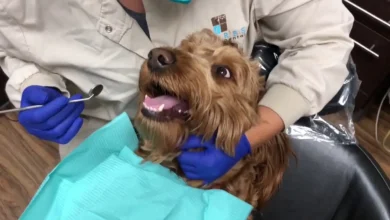The Emergence of a Regulatory Framework for Pet Insurance in New York

In the evolving landscape of pet care, insurance has become a pivotal aspect for pet owners seeking to ensure the well-being of their furry companions.
New York, recognizing the growing demand and potential complications associated with pet insurance, has introduced a bill aimed at establishing a regulatory structure.
This article delves into the specifics of the proposed legislation, its implications for stakeholders, and the anticipated benefits for pet owners across the state.
Overview of the Proposed Legislation

Background and Rationale
The proposed bill seeks to address the absence of a cohesive regulatory framework for pet insurance in New York. With the increasing number of pet owners opting for insurance policies, the need for standardized regulations has become apparent. This bill is designed to provide clarity and protection for consumers while ensuring that insurance providers adhere to fair practices.
Key Provisions of the Bill
- Standardization of Policy Terms
- Clear Definitions: The bill mandates the inclusion of clear definitions for common terms used in pet insurance policies, such as “pre-existing conditions,” “waiting periods,” and “covered services.”
- Transparency Requirements: Insurance providers must disclose all terms and conditions in a straightforward manner, making it easier for consumers to understand their coverage.
- Regulatory Oversight
- Licensing and Compliance: All pet insurance providers operating in New York must obtain a license from the state’s Department of Financial Services (DFS) and comply with established guidelines.
- Regular Audits: The DFS will conduct periodic audits of insurance providers to ensure compliance with the regulatory framework.
- Consumer Protections
- Grace Periods and Cancellation Policies: The bill includes provisions for grace periods during which policyholders can cancel their insurance without penalty.
- Dispute Resolution Mechanisms: Establishment of a formal process for resolving disputes between consumers and insurance providers, including mediation and arbitration options.
Implications for Stakeholders

Impact on Pet Owners
For pet owners, the introduction of a regulatory framework brings several advantages:
- Enhanced Clarity and Assurance: With standardized policy terms, pet owners can make more informed decisions when selecting insurance coverage.
- Improved Transparency: Mandatory disclosures and straightforward policy documents reduce the risk of misunderstandings and unexpected expenses.
- Stronger Consumer Protections: The establishment of dispute resolution mechanisms provides pet owners with avenues to address grievances effectively.
Impact on Insurance Providers
Insurance providers will experience changes in their operations due to the new regulations:
- Compliance Requirements: Providers must adapt their policies and practices to meet the regulatory standards set by the DFS.
- Operational Adjustments: Regular audits and the need for clear, transparent policy documents may necessitate operational changes for some providers.
- Market Competitiveness: Enhanced consumer trust resulting from the regulatory framework could lead to increased competition among providers, ultimately benefiting pet owners.
Future Outlook

The implementation of a regulatory structure for pet insurance in New York marks a significant step forward in the pet care industry. As the bill progresses through the legislative process, stakeholders are optimistic about the potential benefits and improvements it promises. The establishment of clear guidelines and protections is expected to foster a more transparent and trustworthy market for pet insurance, encouraging more pet owners to invest in the health and well-being of their companions.
Conclusion
The proposed bill to create a regulatory structure for pet insurance in New York is a critical development aimed at safeguarding the interests of pet owners and ensuring fair practices within the insurance industry. By establishing clear standards, enhancing transparency, and providing robust consumer protections, the legislation paves the way for a more reliable and trustworthy pet insurance market. As stakeholders await the bill’s passage, the anticipated benefits for both consumers and providers highlight the importance of regulatory frameworks in evolving industries.
FAQs about the Regulatory Framework for Pet Insurance in New York
1. What is the purpose of the proposed regulatory framework for pet insurance in New York?
The purpose of the proposed regulatory framework is to establish clear guidelines and protections for pet insurance policies, ensuring transparency and fairness for consumers while holding insurance providers accountable for their practices.
2. What are the key provisions of the proposed bill?
The key provisions include the standardization of policy terms, regulatory oversight by the Department of Financial Services (DFS), and enhanced consumer protections such as grace periods, cancellation policies, and dispute resolution mechanisms.
3. How will the bill affect pet insurance providers?
Pet insurance providers will need to comply with the new regulations, which include obtaining a license from the DFS, adhering to transparency requirements, and undergoing regular audits to ensure compliance with the regulatory framework.
4. What benefits will the regulatory framework bring to pet owners?
The framework will provide pet owners with clearer, more transparent policy terms, stronger consumer protections, and better dispute resolution mechanisms, ultimately making it easier for them to choose and maintain appropriate insurance coverage for their pets.
5. Will the regulatory framework include any specific protections for pet owners?
Yes, the framework includes protections such as mandatory disclosures of policy terms, grace periods for cancellations, and formal dispute resolution processes to address grievances between consumers and insurance providers.
6. How will the Department of Financial Services (DFS) enforce compliance with the new regulations?
The DFS will enforce compliance through licensing requirements, regular audits of insurance providers, and the establishment of guidelines that providers must follow to ensure they meet the standards set by the regulatory framework.
7. What impact will the regulatory framework have on the pet insurance market in New York?
The regulatory framework is expected to enhance consumer trust, encourage competition among insurance providers, and create a more reliable and transparent market for pet insurance in New York.
8. Are there any provisions for handling disputes between pet owners and insurance providers?
Yes, the bill includes the establishment of formal dispute resolution mechanisms, which may involve mediation and arbitration, to help resolve conflicts between pet owners and insurance providers effectively.
9. What are the expected long-term benefits of implementing this regulatory framework?
The long-term benefits include a more trustworthy and transparent pet insurance market, better-informed consumers, and increased confidence in insurance policies, leading to more pet owners investing in the health and well-being of their pets.
10. When is the proposed bill expected to be enacted?
The timeline for the bill’s enactment will depend on the legislative process. Stakeholders are optimistic about its passage, and updates will be provided as the bill progresses through the necessary stages of approval.



